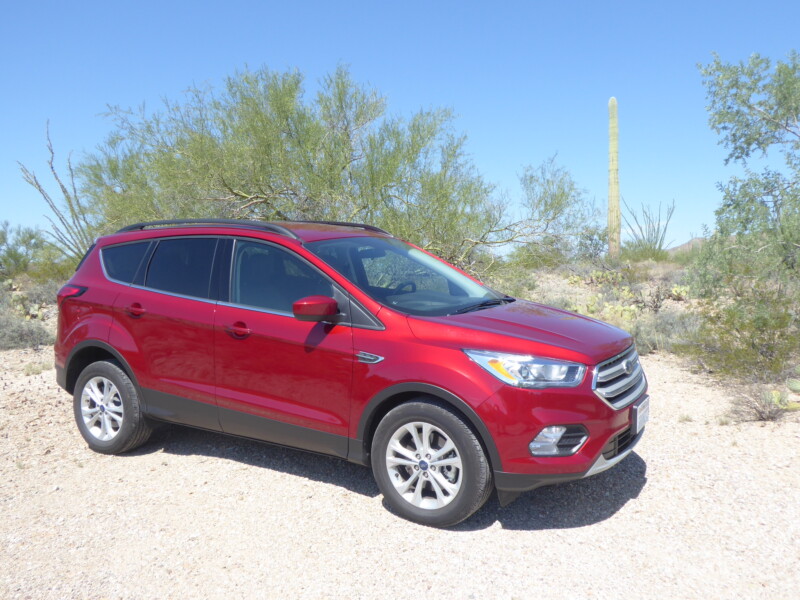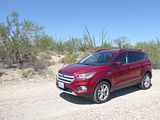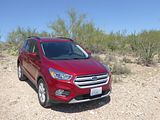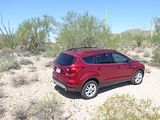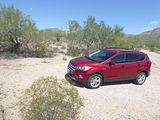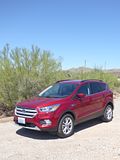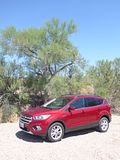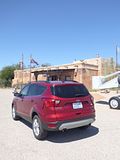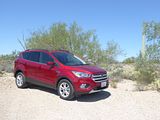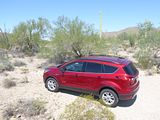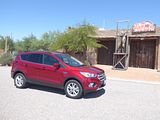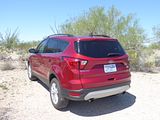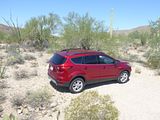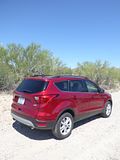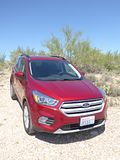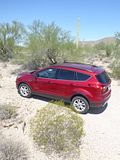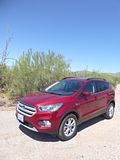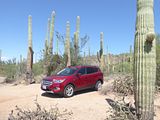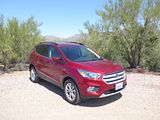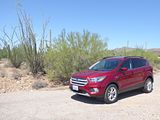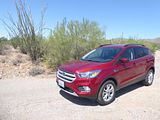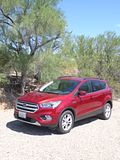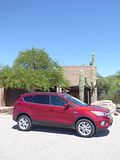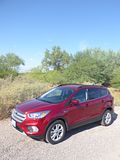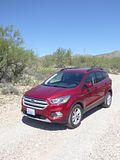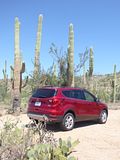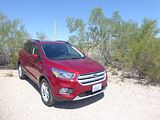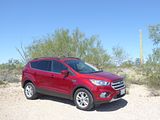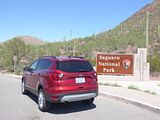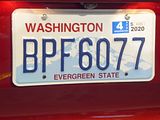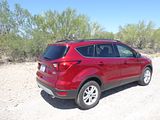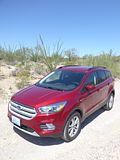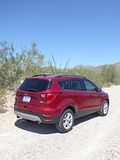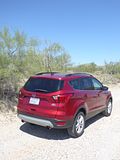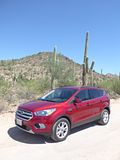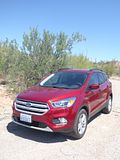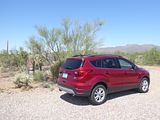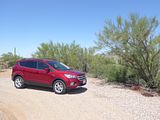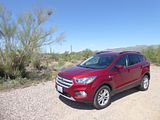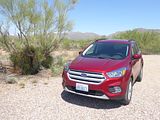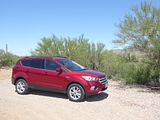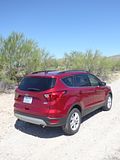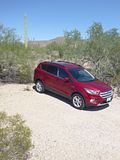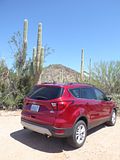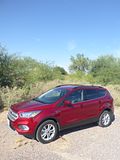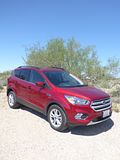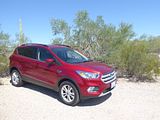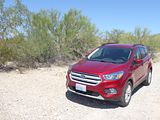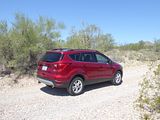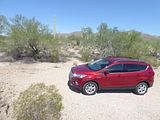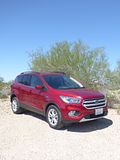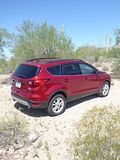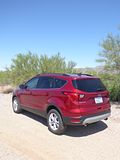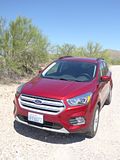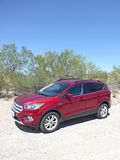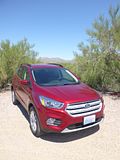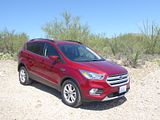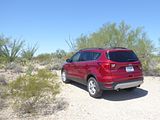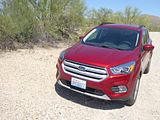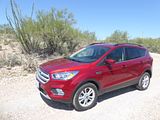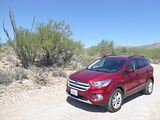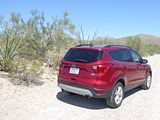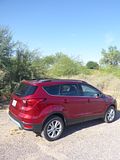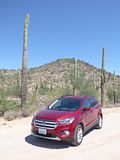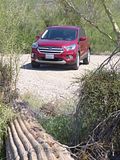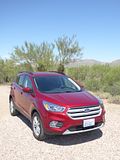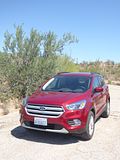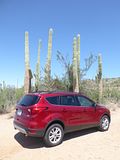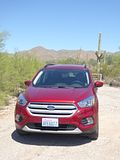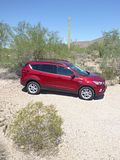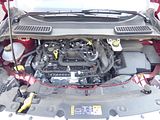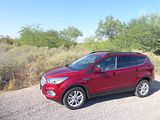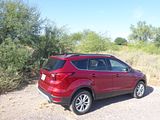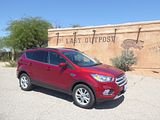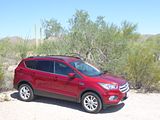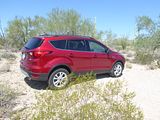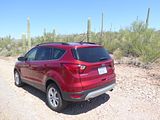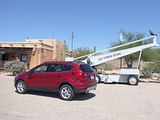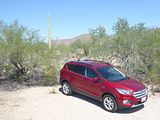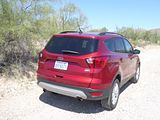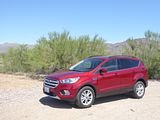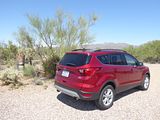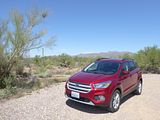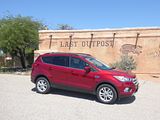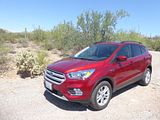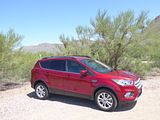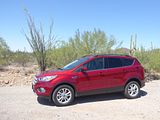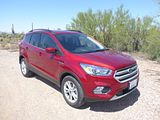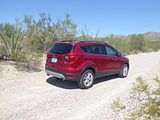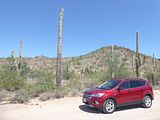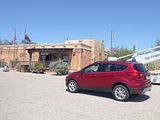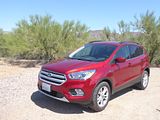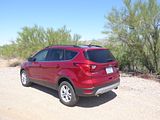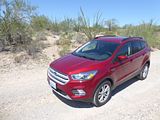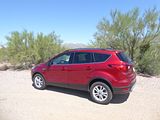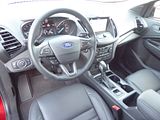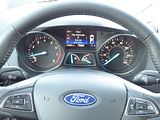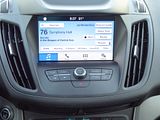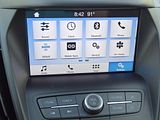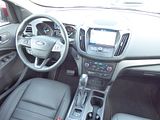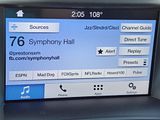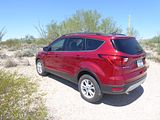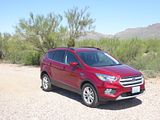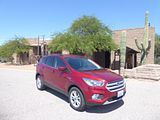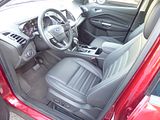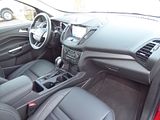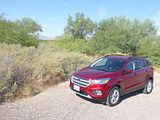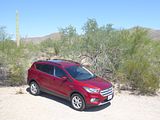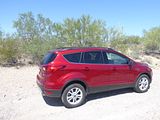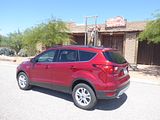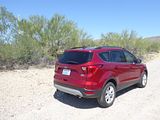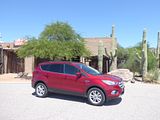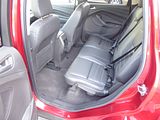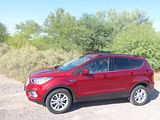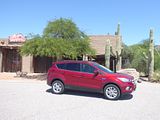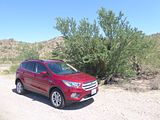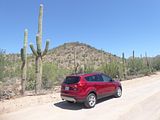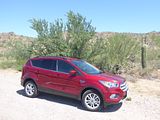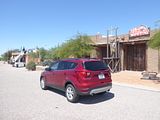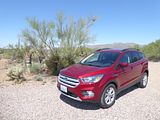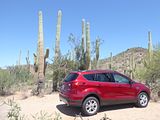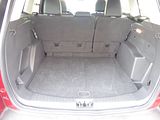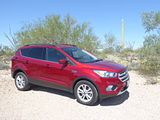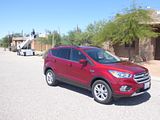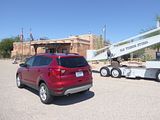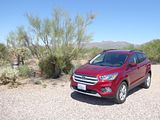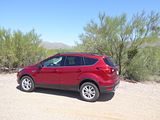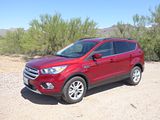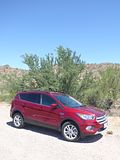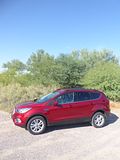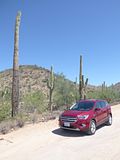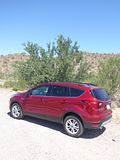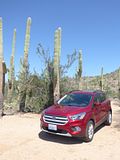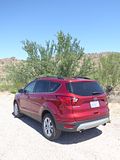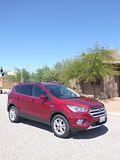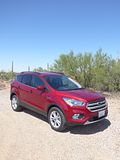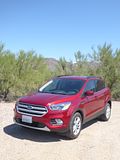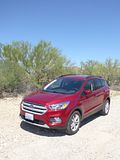In 2018 Ford made a bold announcement about their future US product range. No more saloons and hatches, they said, just Crossovers and SUVs, Vans and Trucks and the Mustang. And the evidence was there when I went to the Los Angeles Auto Show later that year, with a smaller stand and no sign of many of the models and nameplates which had been a feature of the range for some years. For now, the Fusion survives, but the Fiesta, Focus and Taurus had all reached the end of their current model life so were conspicuous by their absence in that Show and all those which have followed. Their exit has been part of a plan, rather than a brutal cull, so all three have remained in the showrooms and indeed further examples of the Fiesta and Taurus have arrived in the rental fleets in 2019 but once these last cars have been sold, that is it. The new Fiesta and Focus seen in Europe will not come to America and the updated Taurus is now made for the Chinese market only. So that means that vehicles like the Escape become ever more important than they already were. As the US market has shifted away from the traditional saloon to vehicles of this type so the Escape has become Ford US’ biggest passenger car seller. More or less the same has happened with many of the rival brands, so whereas until recently it was all about whether a manufacturer could dethrone the sales-champion Toyota Camry and Corolla and Honda’s Civic and Accord (which no-one managed to do except on very rare occasions), it is now all about challenging the Toyota RAV4, the Honda CR-V and Nissan Rogue, as well as watching out for other competitors such as the Kia Sportage and Hyundai Tucson, the Chevy Equinox and GMC Terrain, and plenty of others. And the car has to be good enough to ensure that when a Focus or Fusion customer is looking for an update, they consider an Escape and don’t defect to a rival who does still produce saloon and hatch models. The current Escape, only the second generation to bear the name, dates back to an unveiling at the 2011 Los Angeles Auto Show, going on sale in May 2012. Whereas the first one was produced for the American market and only in a rather tentative way adapted for Europe as the ill-fated and short-lived Maverick, Ford decided that they would replace the European Kuga and the American Escape with the same model, just retaining the names that were familiar in each market, and reflecting market tastes with the range of engines, fuel types and trim levels that were most likely to find favour. The British press loved this generation Kuga, placing it more or less at the top of the class, thanks to its typical Ford-like driving dynamics, but the American press, less influenced by such things, put it rather lower down the pecking order. I got to sample an Escape in April 2016, an SE model with the 1.6 litre Ecoboost engine, and finished in a particularly bold gold colour which Ford called “Electric Spice” which worked well for the photographer on a very soggy and grey Los Angeles day. I was largely impressed, though found the interior to be somewhat of a jumbled mess of buttons and low-rent materials and the economy was way off what I was expecting. Since then, Ford have applied what is now referred to as the “mid cycle” update which came for the 2017 model year cars. Styling tweaks to the front and back make the later cars instantly recognisable, and there were updates to the engines and a new dash as well as equipment changes. An SEL model joined the range in 2018, bridging the trim and price gap between the SE and the Titanium. There were enough differences to mean the Escape has been sittng on my list of cars to try to sample since the facelift. My chance came when I arrived late in the evening at the Phoenix Sky Harbor airport to find it particularly devoid of cars. A rather smart red Escape in what Ford call “Ruby Red Metallic Tinted Clearcoat”, on Washington State plates caught my eye and was the one in which I deposited my luggage whilst I went to see if there was anything else of interest. There was not, so this April 2019 plated Escape was mine for a 24 hour period, to see how I would find it.
A small badge on the lower right of the tailgate of the test car read Ecoboost, so in case there was any doubt, that means, as there was also an SEL badge, a 1.5 litre Turbo 4 cylinder engine, and helpfully there was also an AWD badge alongside it. The 1.5 litre unit was introduced as part of the refresh for the 2017 model year, replacing the slightly larger 1.6 unit that had been fitted before in all bar the entry level Escapes, which to this day retain the old 168 bhp 2.5 litre 4 cylinder unit that has seen service for many a long year. The 1.5 litre offers slightly more power and supposedly better efficiency and economy than the former 1.6 litre unit. It puts out 179 bhp, an increase of just 1 bhp. A 2.0 litre Turbo unit with 245 bhp is available but only in the top spec Titanium model. All versions, regardless of engine have a 6 speed automatic gearbox. As before, the Ecoboost engine comes across well. It is smooth and willing, and as refined as that you will find in any of its rivals. The main part of my test started off from my hotel which is almost adjacent to the 10 freeway, and the first few miles heading south were in the morning commute period, so the traffic ebbed and flowed a bit, and here the Escape held its own, well able to pick up speed very smoothly as traffic cleared and coming to a halt as everyone else did the same. !0 miles south and most of the traffic had gone, and the limit increased to 75 mph, so it was time to test out the cruising abilities of this Ford and here it scored well, with only a rumble from the road really troubling my ears (well, that and the ever present climate control, so necessary on a day which started out with the thermometer reading 85 and peaking at 111 during the afternoon). I did notice that fuel gauge seemed to be moving quickly and constantly down, though, and a check on the trip computer suggested that it was averaging just 24.8 mpg (US), a deeply unimpressive figure. It did not get any better all day, and by the time I got back to Phoenix, having driven 240 miles, more than 3/4s of a tank was gone. 11 gallons went in the car to refill it, suggesting an even worse consumption, but I suspect that it was perhaps only “rental full” on collection. Fuel economy was one of the weak points of the 1.6 litre Ecoboost Escape model that I drove in 2016 and the supposedly more efficient engine does not seem to have made things any better in anything other than the officially quoted figures.
The other driving attributes of the Escape were much as I remembered, and that has to count as a Good Thing, as this car has long excelled as one of the best of its ilk to drive. The steering is particularly well judged, with a level of assistance that is just what you want, so it is never unduly heavy but so you can feel exactly what the steered wheels are going to do, with just the right level of feedback. Handling and grip are good, too. The Escape corners neatly, belying the fact that this rather taller than a traditional hatchback with a centre of gravity that is somewhat raised from ideal. You really can tackle bends in this car with enthusiasm, and not feel that you will get into trouble. There is minimal body roll and the Escape goes round the corner following the line you expect, with understeer kept well in check. There’s no penalty when it comes to ride comfort, either. For sure the suspension is firmer than you will find in rivals such as the RAV4, but that is almost certainly a good thing, as it means that there is no tendency to wallow, with the Escape tackling the lumps and ridges of the different roads I travelled on with aplomb. SEL spec means slightly larger 235/55 R17 alloys compared to the 16″ wheels you get in an SE. The test car had the optional AWD system fitted. This is in permanent operation and is not something you can select. My test was not extreme in any way to be able to vouch for its effectiveness. I had no cause to test the ultimate stopping power of the brakes, thankfully, but in normal operation, there no issues, with the pedal weighting and response just as you would want it. There is an electronic handbrake, operated by a button in the centre console, should you really feel you need to use it. This Escape featured the solution Ford first adopted some years ago to avoiding a blind spot from the door mirrors, with a small square of glass of different focal length in the top corner, and it really is a neat and simple way of solving a problem that many do with complex electronics. All round visibility is generally good and the rear-view camera and parking sensors helped out when I was manoeuvering in tight spaces in the desert, among the cactus, for photography purposes. The Escape proved easy to place on the road and to manoeuvre where I wanted it.
Among the revisions for the 2017 model year cars was something of a rethink of the dash layout. And to be honest, Ford needed to do something, as it had been a real weak point on the original versions of this generation of the Escape. What you get now is better, but it is far from class leading. The overall dash moulding has not changed, and you still get a design with a lot of shapes, angles and joins in it which militates against the interior looking classy. And the choice of materials does not really help. SEL trim gives you a leather-wrapped steering wheel and gearlever, but you still get a variety of moulded plastics, only some of which are soft to the touch, but many of which are not. The dash inlay of the test car was a dark gunmetal, which looked better than some of Ford’s other inlay selections. The instruments are in individual cowls under the single binnacle and they retain the distinctive turquoise pointers that are actually quite pleasing. Smaller dials for fuel level and water temperature are in the central lower half of the area between the rev counter and speedo, with the upper area used for trip computer functions. You select the menu and sub-menu for this using a series of buttons on the left hand steering wheel spoke. Compared to other Ford models such as the Fusion, the options here are quite limited. The right hand steering wheel spoke has the audio repeater selections on it, which means that the cruise control functions form a pod set inside the lower left steering wheel spoke. Column stalks do indicators and wipers, with the lights, complete with an auto function, operated by a rotary dial on the dash to the left of the wheel. There is push-button key less starting. The central part of the dash is where the redesign has occurred. The display screen for the infotainment system is well recessed and set at an angle. It is touch sensitive, though there are a small number of buttons and a control knob beneath it. It is a massive improvement on what went before, with far fewer buttons, and the system is generally responsive in use. Even in SEL spec, the functions are quite limited, with only AM and FM radio and a series of “settings” to choose from. There is no XM Satellite radio, no Apple Car Play or Android Auto and no Navigation. Beneath this unit are a series of buttons and two dials for the dual zone climate control – a system which had its work cut out on a rather warm day. And that, mercifully, is it. Far fewer buttons, and a much cleaner look than before, but still nothing like as premium-looking as Ford would want you to believe.
Some amends for the less than premium looking dash come from the fact the SEL trim does give you leather upholstery. In the test car it was black, with subtle white stitching in it, and the quality seemed reasonable, though it is not up with the standards that you would find in, say, an Audi or a Volvo. SEL trim also means electric adjustment of the seats. In 10 ways, apparently, with the three switches for this on the side of the seat. The steering wheel telescopes in/out as well as up/down and there were height adjustable seat belts, so I was easily able to get the driving position I wanted. I was less sanguine about the seat comfort, at times feeling that the padding and support from the shape of the seat was not quite in the right place, something I did not notice in my previous test of an Escape.
Rear seat space is generous. There is an almost flat floor, and the centre console unit does not come back too far, so a middle occupant should not feel unduly short changed on space, as long as there is enough shoulder room for three. Leg room should not be an issue, as even with the front seats set well back, there is ample and the taller styling means that there is plenty of headroom. You can adjust the angle of inclination of the backrests. There is a drop down central armrest which has two cupholders in its upper surface.
The boot is a good size. It is quite deep even if you do not go above the rear window line, something you could easily do as the test car had no load cover in it, though everything is in place suggesting that there should be (I assume that Hertz removed it!). There are useful stowage pockets on either side of the main flat luggage area. There is a space saver under the boot floor, but precious little room to put anything else around it. If you want more space then the asymmetrically split rear seat backrests simply drop down to give a pretty much flat load bay. There are roof rails fitted to the car if you need even more capacity. Inside the cabin, there is a good-sized glovebox, a deep armrest cubby with an upper storage tray in it, and two small recesses in the console in front and behind the gear lever, as well as a pair of cup holders and bins on the doors. Rear seat passengers get map pockets on the back of both front seats.
There are four Escape trims: S, SE, SEL, and Titanium. The base trim has a scant list of standard features, and is rarely seen, most opting at least for the midrange SE trim. Hertz clearly splashed out on their 2019 Escapes, as the test car and indeed the others I have seen parked up at their locations recently all appear to be SEL spec. The S starts at $24,105 and comes with the 2.5-litre four-cylinder engine, cloth upholstery, a six-way manually adjustable driver’s seat, a rearview camera, MyKey, and Ford’s voice-activated SYNC infotainment system with a 4.2-inch display screen, a six-speaker audio system, and a USB port. The SE trim ($26,500) features a 1.5-litre turbocharged four-cylinder engine, a 10-way power-adjustable driver’s seat, push-button start, remote start, fog lights, dual-zone automatic climate control, and a SYNC 3 touch-screen infotainment system with satellite radio and Android Auto and Apple CarPlay capability. This is the first trim level to offer all-wheel drive ($1,500). Two packages are also available. The Safe and Smart package ($995) adds rain-sensing windshield wipers, adaptive cruise control, assisted pre-collision braking, automatic high beams, blind spot monitoring, rear cross traffic alert, and lane keep assist. The Sport Appearance package ($1,295) adds a leather-wrapped steering wheel and shift knob, partial leather-trimmed sport seats, and exterior styling elements. Starting at $28,445, the SEL trim includes the same 1.5-litre turbo-four as the SE trim but adds a leather-wrapped steering wheel and shift knob, leather-trimmed front seats, rear parking sensors, and a power liftgate. Both packages available for the SE trim are also available for the SEL trim. There’s also a Sun and Style package ($1,195) that includes a panoramic sunroof and larger 17″ alloy wheels. All-wheel drive is available for $1,500. The range-topping Titanium trim ($32,620) adds active park assist, a 10-speaker Sony premium audio system, HD Radio, an auto-dimming rearview mirror, 10-way power-adjustable front seats, and a navigation system. This is the only trim with the 2.0-litre 245 bhp turbocharged four-cylinder engine. You can add the Trailer Tow package, which includes sway control and an auxiliary transmission oil cooler, for $495. The Safe and Smart package ($1,895) adds adaptive cruise control, automatic high beams, blind spot monitoring, rear cross traffic alert, lane keep assist, a panoramic sunroof, and rain-sensing windshield wipers. All-wheel drive will cost you an additional $1,500.
Just as I concluded with the last Escape that I tested, back in 2016, this is a very pleasant vehicle. It scores highly for the fact that it is good to drive, something which cannot be said about many of its rivals, and it is spacious enough inside to meet the needs of a family and all their paraphenalia. Whilst the revised dash layout is an improvement, it is still not that good, and the fuel economy remains a disappointment, which means that the running costs of this Escape would likely be higher than those of many of its rivals. Of course, it has to be observed that most of those are recent designs and this Escape is not. Ford has what they think will be the answer to that, of course, with a new, third generation Escape model that was previewed back in April 2019 and due to go on sale around the turn of the year. If they can keep all the good bits of this generation Escape and improve the areas of weakness, they could yet be vying for class honours. With this generation they never quite got there, but they got close, so if you are after an SUV of this size, then the Escape has to be worthy of consideration, or as a rental customer, not one to walk past in favour of one its competitors.

